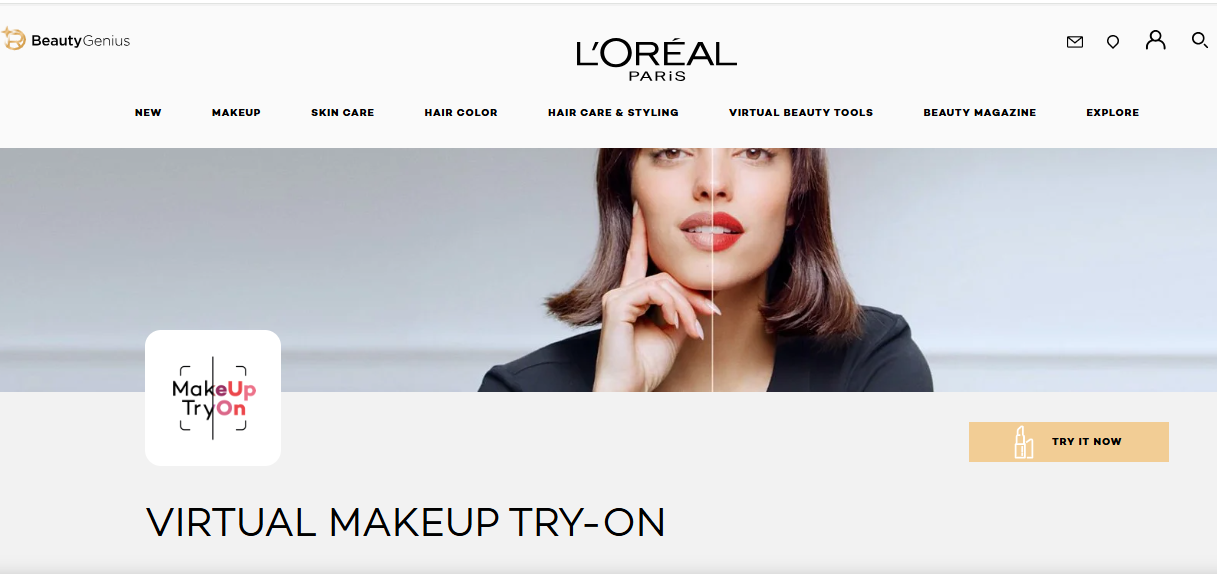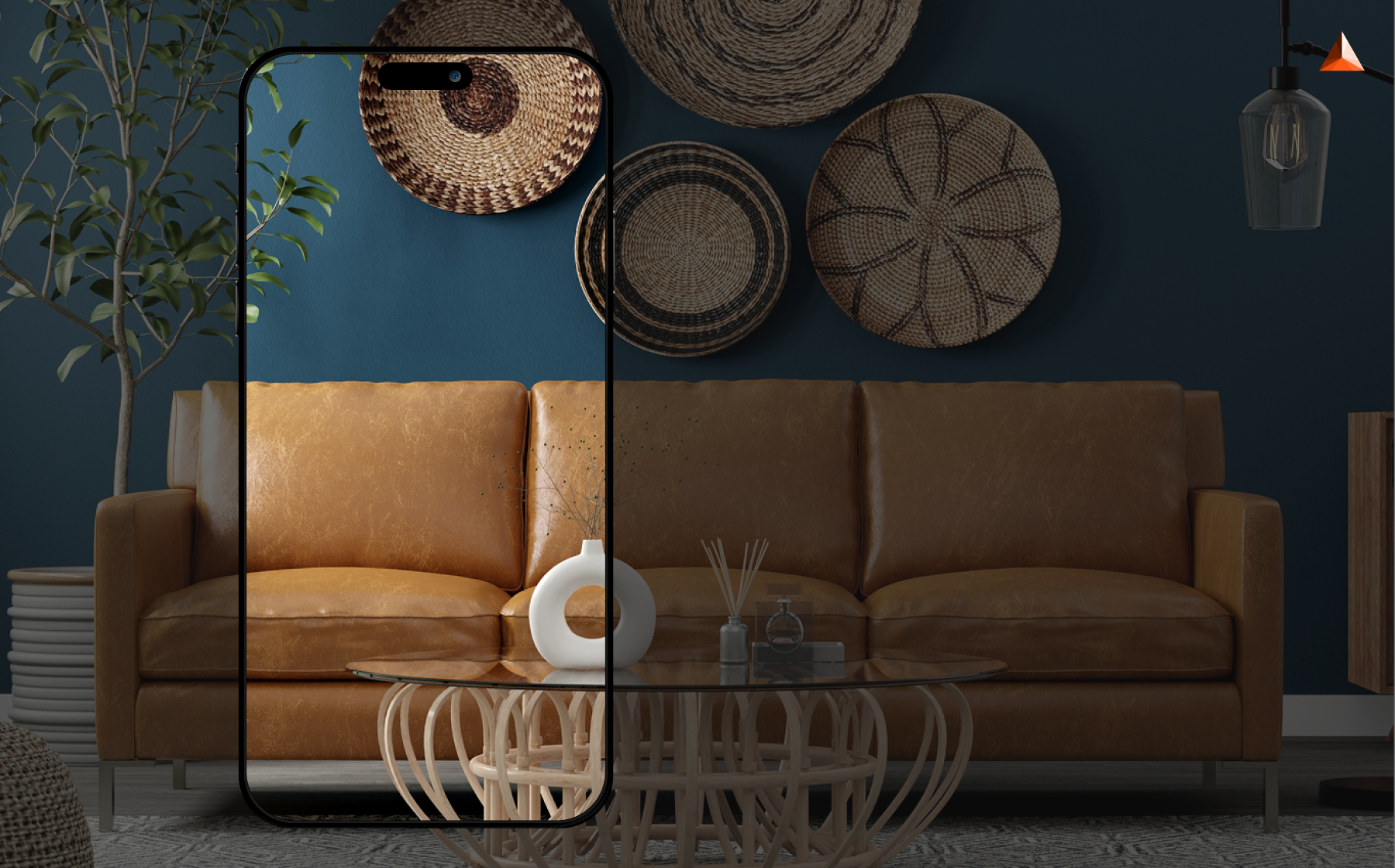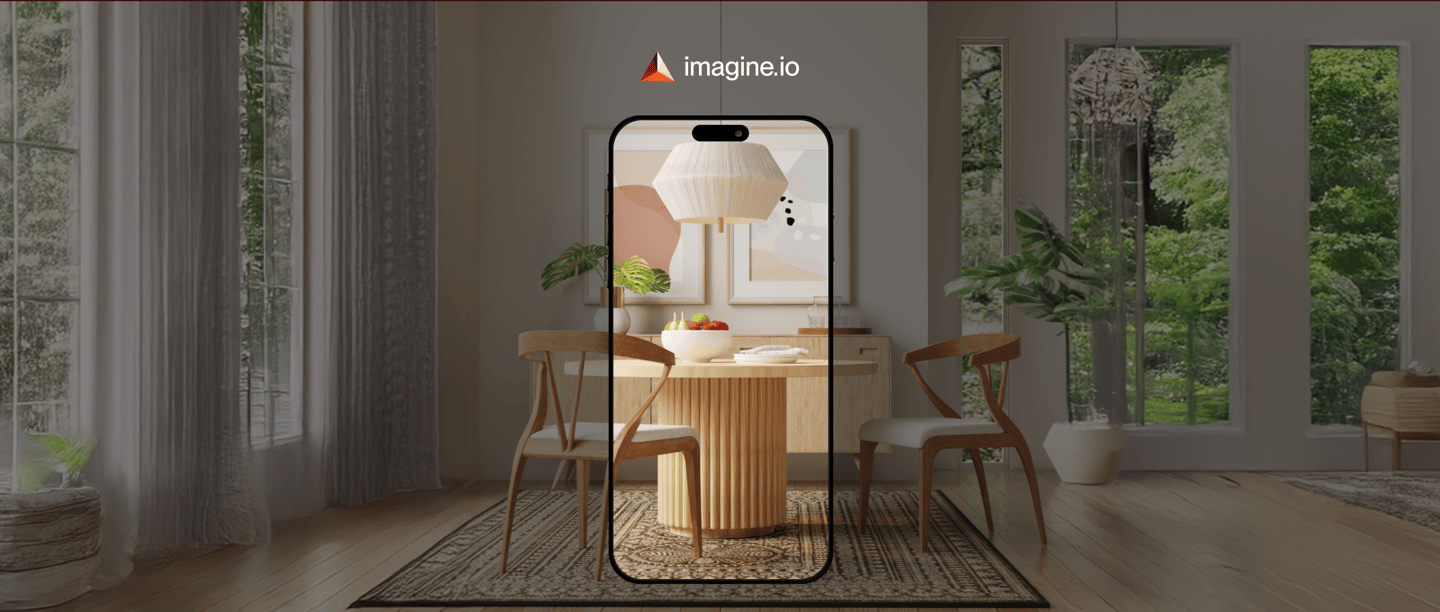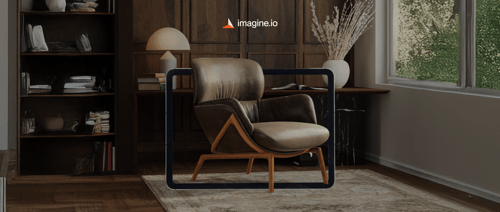In today’s highly competitive ecommerce landscape, businesses are constantly seeking ways to improve customer engagement, boost conversions, and reduce product returns. Augmented reality (AR) has emerged as a transformative technology, bridging the gap between digital shopping and real-world product experience.
By overlaying 3D content onto the real world, AR allows customers—and sales teams—to interact with products in ways traditional images simply cannot replicate.
Whether you’re in home decor, fashion, beauty, electronics, or automotive, AR provides immersive experiences that elevate your ecommerce strategy. In this guide, we’ll explore AR’s role in ecommerce, its key benefits, types, real-world examples, and actionable steps for integrating it into your business operations.
Get the latest updates straight to your inbox.
By clicking sign up you'll receive occasional emails from imagine.io. You always have the choice to unsubscribe within every email you receive.
What is Augmented Reality in Ecommerce?
At its core, augmented reality enhances the physical world with digital content. In ecommerce, AR allows shoppers to visualize products in their own environment using smartphones, tablets, or AR glasses.
Unlike static product images or videos, AR enables interactive, real-time experiences that simulate the actual size, color, and functionality of a product.
Why AR is a Game-Changer
.png?width=1800&height=1120&name=Internal%20-%20Why%20AR%20is%20a%20Game-Changer%20(1).png)
Imagine a shopper scrolling through your online store. They see a sofa they like—but will it fit in their living room? Or a pair of shoes—will they look right? Traditional product images leave too much to the imagination. This is where augmented reality (AR) steps in, turning uncertainty into confidence and clicks into conversions.
Here’s how AR transforms the ecommerce experience:
-
Enhanced Customer Experience
With AR, customers don’t just see a product—they interact with it. They can place a piece of furniture in their home, rotate it, and view it from all angles. They can virtually try on glasses or makeup. This hands-on experience builds trust and reduces hesitation, because customers know exactly what they’re getting.
-
Increased Conversion Rates
When shoppers can see and interact with a product in their own space, they are far more likely to buy. AR experiences can increase online conversions by up to 40%. Think of it as giving your customers a virtual “try before you buy” moment—only more immersive than traditional images or videos.
-
Reduced Returns
Returns cost ecommerce businesses millions each year. Many of these returns happen because the product didn’t meet expectations. AR minimizes that risk by showing customers a realistic preview of the product in their environment. Fewer surprises mean fewer returns—and happier customers.
-
Competitive Differentiation
AR adoption isn’t just about sales—it’s about positioning your brand as innovative. In a crowded market, offering AR experiences helps you stand out, impress customers, and even give your sales teams a powerful tool for B2B presentations.
In short, AR isn’t just a marketing gimmick—it’s a strategic business asset that improves customer experience, boosts revenue, and strengthens your brand.
Types of AR in Ecommerce
Now that you understand why AR matters, let’s explore the ways you can implement it. Think of AR as a toolbox—different tools for different goals.
-
Marker-Based AR
This uses a QR code or printed image to trigger a 3D product overlay. Picture this: a furniture catalog includes a QR code next to a sofa. When scanned, the sofa appears in your living room via your smartphone. It’s simple, effective, and perfect for bridging physical and digital marketing.
-
Markerless AR
No QR code? No problem. Markerless AR uses device sensors and cameras to place 3D objects directly into real-world spaces. Shoppers can point their phone at their room and instantly see how a product fits. This is ideal for furniture, home decor, or any product where spatial placement matters.
-
Projection-Based AR
Projection AR projects digital content onto real-world surfaces. Think interactive showroom displays or trade show demos where products appear on walls or floors. It’s an excellent way to grab attention and create memorable, in-person experiences.
-
Superimposition-Based AR
Ever tried on makeup or glasses virtually? That’s superimposition AR. It overlays digital content on a real object—like your face or body—so customers can see exactly how a product looks before buying. This is particularly impactful for fashion, beauty, and accessories.
-
Choosing the Right AR Type
Here’s the interactive part: imagine your product line. Do customers need to see it in their environment? Markerless AR. Do they need to try it on? Superimposition AR. Are you bridging offline materials with digital? Marker-based AR. Want to wow visitors in a showroom? Projection AR. Often, combining multiple AR types across touchpoints gives the best results.
Real-World AR Ecommerce Examples
AR is no longer a futuristic concept—it’s actively transforming ecommerce across industries. Let’s look at how leading brands are using it to engage customers and drive results:
-
IKEA Place
IKEA has set the benchmark for furniture AR. With IKEA Place, customers can virtually place sofas, tables, and other furniture in their homes using a smartphone. This ensures they understand how a product fits, looks, and complements their space, reducing uncertainty and returns while boosting confidence.
-
Sephora Virtual Artist

Beauty meets technology with Sephora’s Virtual Artist. Shoppers can try on lipstick, eyeshadow, or foundation virtually. This hands-on experience not only improves confidence in purchase decisions but also reduces returns caused by mismatched shades or styles.
-
Automotive Customization Tools
Several car brands now offer AR-based configurators. For instance, Porsche’s AR Visualizer App lets shoppers explore vehicles in 3D, change colors, wheels, and interior options, and even place a life-size version of the car in their driveway using augmented reality. Shoppers can visualize their customized car before committing, which reduces decision fatigue and boosts engagement during the sales process.
-
L’Oreal AR App

L’Oreal takes it further with hair color experimentation. Customers can see how different colors and styles look on them before buying. The app drives engagement and encourages experimentation, turning product exploration into an interactive experience.
These real-world examples show how AR bridges the gap between imagination and reality—empowering customers to make confident decisions and brands to create immersive shopping experiences. Now, let’s explore how you can implement AR for your own business and unlock similar results.
Implementing AR for Your Business
Introducing AR into your ecommerce strategy may seem complex, but breaking it down into actionable steps makes the process manageable:
-
Develop High-Quality 3D Product Models
The foundation of any AR experience is accurate 3D models. High-quality renders ensure that products look realistic, maintain brand standards, and provide a true-to-life visualization for customers.
-
Integrate AR into Your Platform
Whether it’s your website, mobile app, or sales portal, embedding AR functionality seamlessly into your platform is critical. Smooth integration ensures that customers and sales teams can easily interact with products without technical friction.
-
Optimize for Mobile
Most AR interactions happen on smartphones or tablets. Optimizing performance across devices is essential for a smooth, frustration-free experience. Fast loading times, responsive controls, and realistic graphics make AR enjoyable rather than cumbersome.
-
Train Sales Teams
AR isn’t just for end consumers. Your sales and merchandising teams can leverage it for client demos, presentations, and interactive pitches. Training your staff on AR tools ensures they can showcase products effectively and answer questions with confidence.
By following these actionable steps and leveraging tools like imagine.io, businesses can turn the complexity of AR implementation into a streamlined process—bringing products to life, engaging customers, and empowering sales teams with interactive, high-quality visuals.
How imagine.io Simplifies AR for Ecommerce
With imagine.io, creating immersive AR experiences is faster and easier than ever. The platform lets businesses transform product images or CAD files into realistic 3D visuals and publish AR-ready assets directly to their websites—without coding or multiple tools.
From lifelike renders to interactive configurators, imagine.io empowers teams to showcase products dynamically, streamline content production, and enhance customer engagement. By simplifying 3D and AR creation, it helps brands deliver visually compelling shopping experiences that drive conversions and reduce production time.
The Future of AR in Ecommerce
AR technology is evolving rapidly. The next wave involves AI-powered personalization, predictive product visualizations, and enhanced interactive features. Imagine a shopper receiving real-time recommendations based on how products look in their home, or a sales rep instantly generating custom AR demos for clients.
For businesses, this means AR is no longer just a visualization tool—it’s becoming a critical component of personalized, AI-driven commerce strategies.
Conclusion: Bring Products to Life with AR

Augmented reality is transforming the way businesses sell online. By providing immersive, interactive experiences, AR empowers customers and sales teams alike, improves conversion rates, and reduces returns.
Ready to elevate your ecommerce experience? Get your free demo to explore how AR and 3D visualization can bring your products to life, engage your customers, and set your business apart in a competitive market.


.gif?width=1296&height=1296&name=Untitled%20design%20(8).gif)




.png?width=500&name=How%20to%20Add%20a%203D%20Product%20Configurator%20to%20Your%20WordPress%20Website%20(Complete%20B2B%20Guide).png)
















%20(1).png?width=500&name=Why%20Exploded%20Mattress%20Views%20Matter%20(And%20How%20to%20Generate%20Them)%20(1).png)
.png?width=500&name=Best%20Shopify%20Product%20Configurator_%20How%20to%20Choose%20the%20Right%20One%20(2).png)
.png?width=500&name=Why%20Exploded%20Mattress%20Views%20Matter%20(And%20How%20to%20Generate%20Them).png)



.png?width=500&name=Best%20Shopify%20Product%20Configurator_%20How%20to%20Choose%20the%20Right%20One%20(1).png)







.png?width=500&name=How%203D%20Rendering%20Can%20Make%20or%20Break%20Your%20Industrial%20Design%20Pitch%20(1).png)








%20with%20Digital%20Twins%20and%203D%20Visualization.png?width=500&name=Optimizing%20Your%20Digital%20Asset%20Management%20(DAM)%20with%20Digital%20Twins%20and%203D%20Visualization.png)




.png?width=500&name=Styling%20Home%20Decor%20for%202025_%20From%20Global%20Influences%20to%20Playful%20Personalization%20(1).png)
